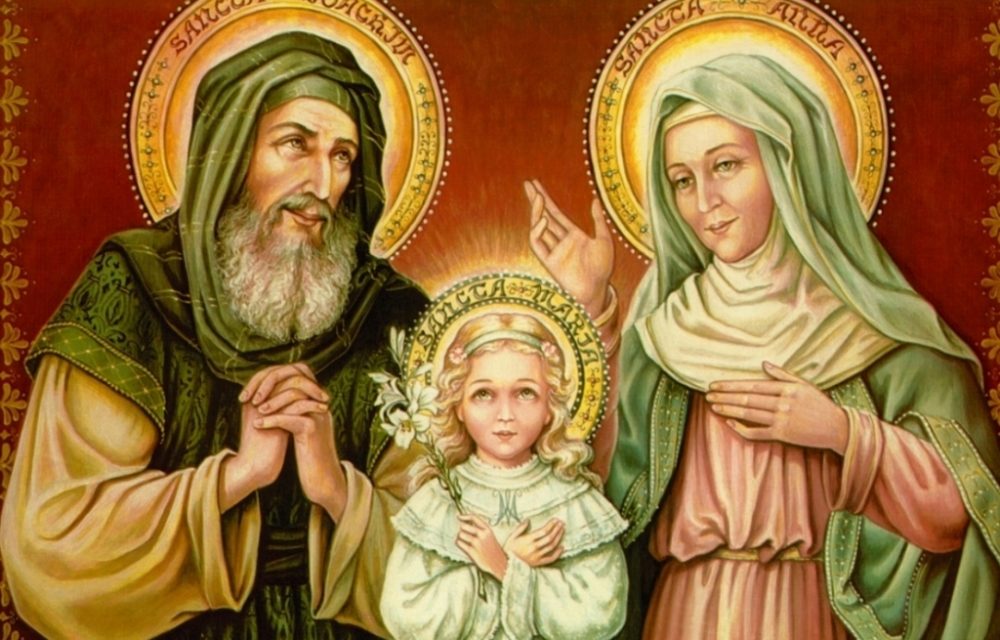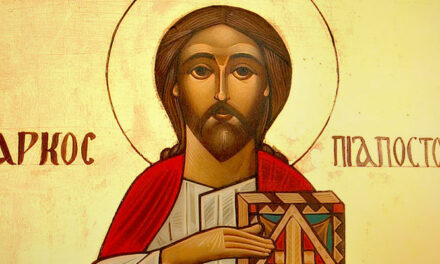July 26 is St. Anne's day, the day of Tuesday, in Hungarian folk tradition. Catholics honor the Virgin Mary in it.
The holy books of the New Testament say nothing about the parents of the Blessed Virgin Mary. We come across some names from the family: Elizabeth and Zacharias, Salóme and Zebedee, but the names of these two parents are not mentioned.
An apocryphal book from the 2nd century says that Mary's mother was called Anna and her father Joachim, and the meaning of the two names deserves attention, because Anna means: blessed with grace, and Joachim: God comforts.
The holiday is on the 13th and 14th. It spread in Europe around the 19th century, as a consequence of the interest with which the believers turned towards the human nature and human reality of Christ. This interest was revived following the stories of knights returning from the Crusades, and it also extended to the homeland and relatives of Jesus. It is understandable that respect for the Savior's grandparents also revived.
The date of the holiday came from the anniversary of the consecration of a church. The old tradition held that Mary was born in Jerusalem, and that her birthplace, Mrs. Anna's house, stood near the Lake of Bethesda. 5–6. century, a basilica was built over this supposed birthplace, and its consecration day was July 26. In Byzantium, the feast and farewell day of the church was held on July 25, and around 50 AD a separate church was already dedicated to Anna. Emperor Justinian made the day a mandatory holiday.
In the Byzantine rite, the day of the death of St. Anna is celebrated on July 25, on which day a church was dedicated in her honor in Constantinople around 550.
In the West, the July 26 holiday spread from the 12th century. Pope Pius V abolished it in 1568, but in 1583 it was added to the Roman calendar again, on July 26. Saint Joachim was celebrated on March 20 from 1584, on the Sunday after the Octave of the Blessed Virgin Mary from 1738, and on August 16 from 1913. In 1969, it was made the same day as St. Anne.
The New Testament books do not say a word about Mary's parents, Anna and Joakim. The sources of their legend and respect are apocryphal writings, primarily the pre-Gospel of James. According to the completed medieval legend, Anna's first husband was Joakim. They had no children for a long time, after all, after an angelic prophecy, Anna became pregnant and gave birth to the "first" Mária, the future "Mother of God".
Joakim soon died and Anna remarried. From her new husband, Kleofás, she conceived the "second" Mary, the future wife of Alpheus, whose four sons became Jesus' cousins and - except for one - apostles: the younger Jacob, Tádé Júdás, the zealot Simon and József. Anna also buried Cleofast and remarried a man named Solomon. She gave birth to the "third" Maria, who was called Salome after her father. She became the wife of Zebedee and gave birth to more cousins and apostles for Jesus: the elder James and John.
Anna and her daughters, the three Marys, could only form a family in a brain full of pagan ideas (the Coptic Christian understanding went so far as to make the three Marys one and make their sons Jesus' brothers). In their ensemble, they are accompanied by the image of an archaic trinity of goddesses alien to the Judeo-Christians, which in the Hellenistic period is represented by a major goddess and her three-member entourage (see Hera and the Hesperians, Aphrodite and the Graces).
Sándor Bálint writes the following about the veneration of St. Anna:
"The richness and colorful diversity of St. Anne's worship in Hungary is shown by the diversity of the cult. As her privileged patron, she was respected by women in many matters and troubles, but she was also respected by those whose occupations are somehow related to the housewife and women's care: weaving workers, lace makers, broom makers.
She was respected by the carpenters as a guild patron because in the past, making the altar cabinet was one of the tasks of the craftsmen, and Anna was worthy of carrying the living tabernacle, Mary, in her womb. The coopers also respected him, apparently from the consideration that the Vine sprouted from Jesse's stock, Anna and Mária's womb: from it grew the wine of redemption (the redeeming Blood). He was also the patron saint of miners, obviously because the gospel of his feast was about the treasure hidden in the field, the squid searching for the precious pearl, and these similes could also be applied to St. Anne. In the Baroque era, St. Anna was a particularly honored patron of the dying."
St. Anna has a significant cult in the Palóc folk tradition. In the religious culture of the Palócs, St. Anna, the mother of the Virgin Mary, is the patroness of the barren, those in the blessed state, and those suffering from female diseases. Saint Anne is revered as the hope of those waiting for the blessing of children, as the patron saint of families and as the patron saint of a good death. St. Anne's Day palóc farewell is organized in Balassagyarmat.
Source: PP/Felvidék.ma/jelesnapok.oszk.hu/katolikus.hu












